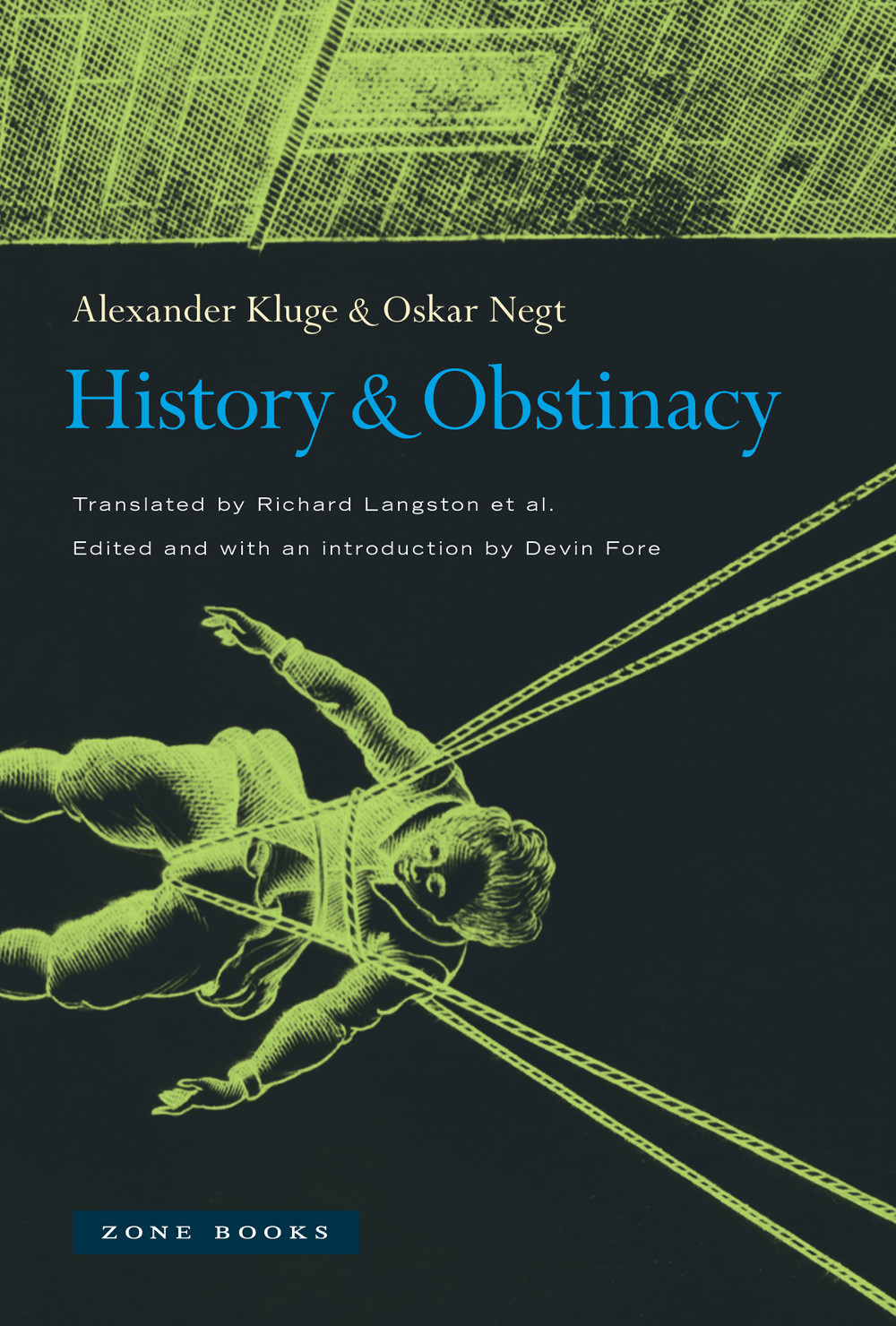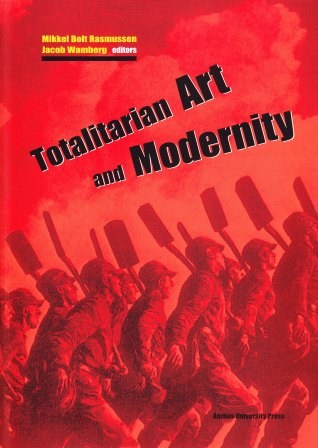Alexander Kluge, Oskar Negt: History and Obstinacy (1981–)
Filed under book | Tags: · capitalism, commodity, knowledge, labour, politics, power, production, time, violence, war, women

“If Marx’s opus Capital provided the foundational account of the forces of production in all of their objective, machine formats, what happens when the concepts of political economy are applied not to dead labor, but to its living counterpart, the human subject? The result is Kluge and Negt’s History and Obstinacy, a breathtaking archaeology of the labor power that has been cultivated in the human body over the last 2,000 years. Supplementing classical political economy with the insights of fields ranging from psychoanalysis and phenomenology to evolutionary anthropology and systems theory, History and Obstinacy examines the complex ecology of expropriation and resistance as it reaches down into the deepest strata of unconscious thought, genetic memory, and cellular life. First published in 1981, this epochal collaboration has now been edited, expanded, and updated by the authors in response to global developments of the last decade to create an entirely new analysis of “the capitalism within us.””
First published as Geschichte und Eigensinn, 3 vols., Zweitausendeins, Frankfurt am Main, 1981.
Translated by Richard Langston et al.
Edited and with an Introduction by Devin Fore
Publisher Zone Books, New York, 2014
ISBN 1935408461, 9781935408468
541 pages
via Baykamber
Reviews: Christopher Pavsek (New German Critique 1996), Stewart Martin (Radical Philosophy 2015), Tara Hottman (Qui Parle 2015), Adrian Wilding (Marx & Philosophy 2015).
PDF (14 MB, updated on 2021-7-12)
Video complements
Mikkel Bolt Rasmussen, Jacob Wamberg (eds.): Totalitarian Art and Modernity (2010)
Filed under book | Tags: · art history, avant-garde, capitalism, communism, democracy, fascism, labour, modernism, modernity, monument, mythology, nazism, politics, revolution, socialism, socialist realism, soviet union, technology, totalitarianism, war

“In spite of the steadily expanding concept of art in the Western world, art made in twentieth-century totalitarian regimes – notably Nazi Germany, fascist Italy and the communist East Bloc countries – is still to a surprising degree excluded from mainstream art history and the exhibits of art museums. In contrast to earlier art made to promote princely or ecclesiastical power, this kind of visual culture seems to somehow not fulfill the category of ‘true’ art, instead being marginalised as propaganda for politically suspect regimes.
Totalitarian Art and Modernity wants to modify this displacement, comparing totalitarian art with modernist and avant-garde movements; confronting their cultural and political embeddings; and writing forth their common generalogies. Its eleven articles include topics as varied as: the concept of totalitarianism and totalitarian art, totalitarian exhibitions, monuments and architecture, forerunners of totalitarian art in romanticism and heroic realism, and diverse receptions of totalitarian art in democratic cultures.”
With contributions by Mikkel Bolt, Sandra Esslinger, Jørn Guldberg, Paul Jaskot, Jacob Wamberg, Christina Kiaer, Anders V. Munch, Kristine Nielsen, Olaf Peters, K. Andrea Rusnock, and Marla Stone.
Publisher Aarhus University Press, Århus, 2010
Acta Jutlandica series, 9
ISBN 8779345603, 9788779345607
359 pages
via Mikkel Bolt
PDF (10 MB)
Comment (0)Xanti Schawinsky: Head Drawings and Faces of War (2014)
Filed under catalogue | Tags: · art, bauhaus, drawing, war

This catalogue offers “a look at first generation Bauhaus artist Alexander ‘Xanti’ Schawinsky’s oeuvre, which encompasses a range of social and political investigations. Schawinsky played a key role in the school’s vital social life and was a member of the Bauhaus Band. He studied graphic design and experimental photography and was also deeply engaged in the Bauhaus’s theater workshop as an actor, set and costume designer, creator of performances, and teacher.
The exhibition catalogue focuses on two bodies of work Schawinsky made between 1941 and 1946, Faces of War and the Head Drawings. The former are man-machine hybrids that could represent either an aggressive enemy or a powerful avenger—or perhaps an identity that encompasses both. The Faces of War break from the utopian optimism of the early Bauhaus and reveal the existential struggle of an artist coping with identity and the devastation of war. The Head Drawings allowed Schawinsky to literally remake his own “portrait” out of such detritus of the natural world as thread, crystals, rope, and rocks.”
Introduction by Brett Littman
Essays by Michael Bracewell and Juliet Koss
Publisher The Drawing Center, New York, 2014
Drawing Papers series, 119
ISBN 9780942324891
120 pages

